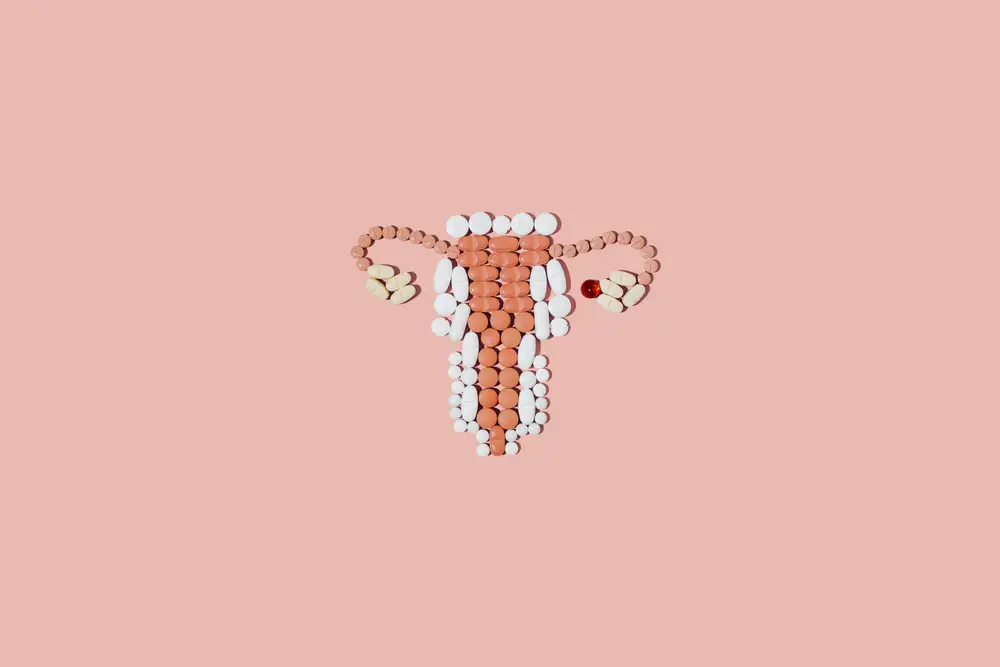A radical new idea to speed up anti-aging research: Test ovaries, not mice

A study published in Nature Aging on Friday reveals a new and revolutionary way to rapidly test out potential antiaging drugs: Give them to women.
Or, more specifically, test them out on aging ovaries, whether in well-controlled human studies, in the ovaries of mice, or in donor tissue samples.
The finding could speed up the way that so-called geroprotective (aka longevity) drugs are evaluated, and ultimately brought to market, by making it easier for researchers to assess how well potential aging drugs are working. Researchers could measure the health of ovaries dosed with different drugs and supplements over a matter of months, instead of waiting years or decades to see what works.
“Yeast, worms, flies and mice, we already know how to make them live longer and healthier,” Columbia University professor and geneticist Yousin Suh, lead author of the new study, told B-17. “Since aging occurs in the ovaries so much more rapidly, why don’t we use ovaries as a very fast test platform for geroprotectors?”
The ovary could be a perfect testing ground for slowing down aging

Geneticist Yousin Suh studies ovarian aging.
For years, longevity scientists have known that the ovary is the fastest-aging organ in the body.
Suh’s new study goes deeper. It shows that ovarian aging is a great proxy for overall human aging at a molecular level — ovarian aging is just happening several decades earlier, and very rapidly.
“This is the first time where you’ve seen a really solid study done by a leading aging researcher that is demonstrating that a very highly conserved pathway that drives aging is happening in the ovary,” Francesca Duncan, a professor of reproductive science at Northwestern University, told B-17.
Duncan said for many years, aging researchers were hesitant to consider ovarian changes as a true aging phenomenon because they happen when women are still relatively young.
“We just don’t consider women in their 30s to 50s in that ‘old’ category,” she said. “But I think that tide has turned because we know this is an aging process and it has significant clinical and societal implications. So more and more people are paying attention to this concept of ovarian aging and considering it as a true aging process.”
For the study, Suh’s team evaluated human ovary tissue samples from four young women (aged 23-29) and four more “reproductively aged” women (49-54) to create an “atlas” of aging across every cell type in the ovary.
Her study displays in fine cellular and molecular detail how human ovaries age, and how genetics impact the process. It shows that one of the critical hallmarks of aging, mTOR signaling, is “screaming high” in middle-aged women’s ovaries across all cell types, Suh said. That suggests those 50-year-old ovaries could be a great model for studying aging and for rapidly testing out drugs that scientists think might extend human lifespan and healthspan.
“People just do not get the message,” Suh said. “They think, ‘oh, who wants a baby until you’re 60? Or, who wants a period until you’re 60 or 70?’ That’s not the point. The point is we want them to slow down aging.”
Changes in ovarian aging are also rapid, specific, and traceable with widely available tools, such as the common blood tests that measure a woman’s ovarian reserve or inflammatory markers.
“If something works in the ovary in terms of delaying aging, chances are it’s going to be a geroprotector of the whole body,” Suh said. “It’s not just reproduction; the ovary does coordinate and orchestrate health.”
But Duncan cautioned that while the idea of using ovaries as a proxy for whole-body aging is “tantalizing,” more research will still be needed to confirm the technique.
“There needs to be a lot more studies of: how do those changes that are happening in the ovary, how do those directly translate into changes into overall health?” she said.
Hot antiaging supplements and drugs, like metformin and NMN, could be tested faster on ovaries

To date, there are no drugs approved in the US to treat aging.
Instead, there’s a patchwork of influencers, clinics, and high-end spas all promising to help people feel young as they grow old. They promote treatments like metformin — a diabetes drug that’s being repurposed for antiaging and weight loss — or supplements like NAD+ boosters, CoQ10, and resveratrol.
It’s pretty hard to assess how well each of those personalized (and often pricey) treatments are actually working. Hard science on human health outcomes is still limited because evaluating the traditional signs of aging, by measuring things like brain or heart health, takes years.
Suh imagines future studies could try these pills out in female mice or in women, and focus researchers’ attention on how well their ovaries are doing over the course of the next several months.
In fact, Suh is already trying this: she’s one of the first people testing out potential antiaging drugs on middle-aged women.
She is spearheading an ongoing study of a few dozen women in perimenopause who are taking small doses of rapamycin, an immunosuppressive cancer drug that longevity researchers think could be repurposed for healthy aging. The study will measure how subjects ovarian reserve levels change over the course of several months, both during and after their three-month treatment.
While the full results aren’t ready yet, Suh says she’s seeing clear trend lines in the data, suggesting that the experiment might have been a success.
“I think it’s really exciting because in ovaries the results will be very, very quick,” she said.





